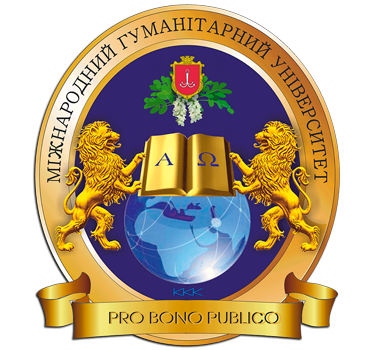THE CORRELATION BETWEEN CHANGING ESTROGEN AND PROGESTERONE LEVELS AND BLOOD GLUTAMATE LEVELS DURING NORMAL PREGNANCY
DOI:
https://doi.org/10.31379/2411.2616.14.2.2Keywords:
estrogen; progesterone; blood glutamate; pregnancy; neuroprotection.Abstract
Our investigation aimed to examine the impact of changing estrogen and progesterone levels during normal pregnancy on blood glutamate levels. We recruited 116 pregnant women and partitioned them into three groups based on their gestational ages: group 1 – first-trimester pregnancy, group 2 – secondtrimester pregnancy, and group 3 – third-trimester pregnancy. We drew single samples of venous blood from the participating women and analyzed for differing levels of estrogen, progesterone, glutamate-pyruvate transaminase (GPT), glutamate-oxaloacetate transaminase (GOT), and glutamate. Results showed that the second (p<0.001) and third trimesters (p<0.001) had significantly lower blood glutamate levels. Analyses also revealed the existence of an inverse correlation between blood glutamate levels and estrogen and progesterone levels in the entirety of the pregnancies (p<0.001). On the other hand, GOT and GPT levels were unchanged during pregnancy periods, although a slight reduction in GPT was observed during the third trimester. Inverse correlations were also obtained between increased estrogen and progesterone levels during the advanced stages of the pregnancies and blood glutamate levels of the women. Further rises in estrogen and progesterone levels barely impacted blood glutamate levels once the blood glutamate reducing effect reached the maximal point. Findings from this study show that changing estrogen and progesterone levels have an impact on blood glutamate levels, a mechanism that is most probably not facilitated by a GOT/GPT conversion mechanism.
References
Neuroprotective effects of female gonadal steroids in reproductively senescent female rats. / N.J. Alkayed [et al.] // Stroke. – 2000. – Vol. 31(1). – P. 161-168.
Neurotrophic and neuroprotective actions of estrogen: basic mechanisms and clinical implications. / D.W. Brann [et al.] // Steroids. – 2007. – Vol. 72(5). – P. 381-405.
Blood levels of glutamate oxaloacetate transaminase are more strongly associated with good outcome in acute ischaemic stroke than glutamate pyruvate transaminase levels. / F. Campos [et al.] // Clin Sci (Lond). – 2011. – Vol. 121(1). – P. 11-17.
Neuroexcitatory amino acids and their relation to infarct size and neurological deficit in ischemic stroke. / J. Castillo [et al.] // Stroke. – 1996. – Vol. 27(6). – P. 1060-1065.
Increased glutamate in CSF and plasma of patients with HIV dementia. / C. Ferrarese [et al.] // Neurology. – 2001. – Vol. 57(4). – P. 671-675.
Differential regulation of NMDAR1 mRNA and protein by estradiol in the rat hippocampus. / A.H. Gazzaley [et al.] // J Neurosci. – 1996. – Vol. 16(21). – P. 6830-6838.
Blood-mediated scavenging of cerebrospinal fluid glutamate. / M. Gottlieb [et al.] // J Neurochem. – 2003. – Vol. 87(1). – P. 119-126.
Fluorometric determination of aspartate, glutamate, and gamma-aminobutyrate in nerve tissue using enzymic methods. / L.T. Graham [et al.] // Anal Biochem. – 1966. – Vol. 15(3). – P. 487-497.
Neuroprotective effects of estrogens: potential mechanisms of action. / P.S. Green [et al.] // Int J Dev Neurosci. – 2000. – Vol. 18(4-5). – P. 347-358.
Effects of estrogen treatment on glutamate uptake in cultured human astrocytes derived from cortex of Alzheimer’s disease patients. / Z. Liang [et al.] // J Neurochem. – 2002. – Vol. 80(5). – P. 807-814.
Increased risk of cognitive impairment or dementia in women who underwent oophorectomy before menopause. / W.A. Rocca [et al.] // Neurology. – 2007. – Vol. 69(11). – P. 1074-1083.
Gender differences in acute CNS trauma and stroke: neuroprotective effects of estrogen and progesterone. / R.L. Roof [et al.] // J Neurotrauma. – 2000. – Vol. 17(5). – P. 367-388.
CSF and plasma amino acid levels in motor neuron disease: elevation of CSF glutamate in a subset of patients. / P.J. Shaw [et al.] // Neurodegeneration. – 1995. – Vol. 4(2). – P. 209-216.
Estrogen use and early onset Alzheimer’s disease: a population-based study. / A.J. Slooter [et al.] // J Neurol Neurosurg Psychiatry. – 1999. – Vol. 67(6). – P. 779-781.
Different responses of gonadotropin-releasing hormone (GnRH) release to glutamate receptor agonists during aging. / M.A. Sortino [et al.] // Brain Res Bull. – 1996. – Vol. 41(6). – P. 359-362.
Progesterone exerts neuroprotective effects after brain injury. / D.G. Stein // Brain Res Rev. – 2008. – Vol. 57(2). – P. 386-397.
Anesthesia increases circulating glutamate in neurosurgical patients. / J.F. Stover, O.S. Kempski // Acta Neurochir (Wien). – 2005. – Vol. 147(8). – P. 847-853.
From the liver to the brain across the blood-brain barrier. / V.I. Teichberg // Proc Natl Acad Sci U S A. – 2007. – Vol. 104(18). – P. 7315-7316.
Homeostasis of glutamate in brain fluids: an accelerated brain-to-blood efflux of excess glutamate is produced by blood glutamate scavenging and offers protection from neuropathologies. / V.I. Teichberg [et al.] // Neuroscience. – 2009. – Vol. 158(1). – P. 301-308.
Accuracy of liver function tests for predicting adverse maternal and fetal outcomes in women with preeclampsia: a systematic review. / S. Thangaratinam [et al.] // Acta Obstet Gynecol Scand. – 2011. – Vol. 90(6). – P. 574-585.
Plasma human chorionic gonadotropin, estrone, estradiol, estriol, progesterone, and 17 alpha-hydroxyprogesterone in human pregnancy. 3. Early normal pregnancy. / D.Tulchinsky, C.J. Hobel // Am J Obstet Gynecol. – 1973. – Vol. 117(7). – P. 884-893.
Neuroprotective effects of estrogens on hippocampal cells in adult female rats after status epilepticus. / J. Veliskova [et al.] // Epilepsia. – 2000. – Vol. 41, Suppl 6. – P. 30-35.
Serum progesterone levels correlate with decreased cerebral edema after traumatic brain injury in male rats. / D.W. Wright [et al.] // J Neurotrauma. – 2001. – Vol. 18(9). – P. 901-909.
The Effects of Insulin, Glucagon, Glutamate, and Glucose Infusion on Blood Glutamate and Plasma Glucose Levels in Naive Rats. / A. Zlotnik [et al.] // J Neurosurg Anesthesiol. – 2011.
The Effects of Estrogen and Progesterone on Blood Glutamate Levels: Evidence from Changes of Blood Glutamate Levels During the Menstrual Cycle in Women. / A. Zlotnik [et al.] // Biol Reprod. – 2010. – P. 2010.
The neuroprotective effects of oxaloacetate in closed head injury in rats is mediated by its blood glutamate scavenging activity: evidence from the use of maleate. / A. Zlotnik [et al.] // J Neurosurg Anesthesiol. – 2009. – Vol. 21(3). – P. 235-241.
The contribution of the blood glutamate scavenging activity of pyruvate to its neuroprotective properties in a rat model of closed head injury. / A. Zlotnik [et al.] // Neurochem Res. – 2007. – Vol. 18(9). – P. 901-909.
Brain neuroprotection by scavenging blood glutamate. / A. Zlotnik [et al.] // Exp Neurol. – 2007. – Vol. 203(1). – P. 213-220.
Effect of estrogens on blood glutamate levels in relation to neurological outcome after TBI in male rats. / A. Zlotnik [et al.] // Intensive Care Medicine. In press.
Determination of factors affecting glutamate concentrations in the whole blood of healthy human volunteers. / A. Zlotnik [et al.] // J Neurosurg Anesthesiol. – 2011. – Vol. 23(1). – P. 45-49.






